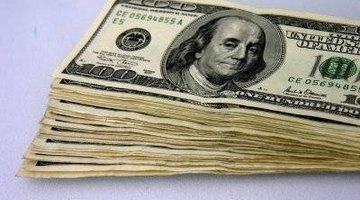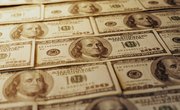Exchange rates express the value of one country's currency in relation to the value of another country's currency. The rates play an important part in economics, affecting the balance of trade between nations and influencing investment strategies.
The Facts
Exchange rates are the rates at which the currency of one country can be exchanged for the currency of another. Suppose the exchange rate between dollars and Euros was 2 Euros per dollar (always state exchange rates with the foreign currency as a multiple of the dollar). If you walked into an American bank and handed over $15, you would receive 30 Euros. Now suppose that the exchange rate changed to 3 Euros per dollar. If you went to that same bank, they would give you 45 Euros for your $15.
Significance
Exchange rates can be useful if you're planning a vacation or want to wire money to friends. But it's also important to businesses when they are trying to determine whether or not to invest in a foreign country and how much. Workers are often wary of taking jobs in countries whose exchange rates fluctuate often and by large amounts.
To understand this concern imagine you are back at the bank. You have your 45 Euros in exchange for $15. If the exchange rate stays at 3 Euros per dollar you could get back your $15. But suppose after you made your first exchange, the rate went to 6 Euros per dollar. When you go to trade back to dollars, you will only get $7.50. If you can image this happening with millions of dollars, you can understand why even small fluctuations in exchange rates would cause concern for investors.
Methods
Countries, especially developing ones, pursue stable exchange rates to attract foreign capital. They usually accomplish this by fixing their currencies to that of a more stable country, a practice called pegging. A country's central bank may increase or decrease the money supply to maintain this rate. Many countries have their currencies pegged to the U.S. dollar, but some such as China and Kuwait have dropped the connection in recent years as the dollar has lost strength.
Theories/Speculation
Stable exchange rates generally are viewed as favorable, but there can be drawbacks. An economics principle called the Mundell-Flemming Trilemma states that countries have three economic goals: (1) stable exchange rates, (2) free movement of capital and (3) independent money supply. The Trilemma states that it is only possible to have two of these goals at the same time. The trend in the post-World War II economic system has been to have (1) and (2) at the expense of (3).
Warning
Preoccupation with exchange rate stability can exacerbate other economic problems. In the late 1990s, Argentina had inflation problems that could have been eased if the government had adjusted the money supply. But this strategy was not pursued partly because of concerns about exchange rate stability.
Related Articles
References
Writer Bio
Liz Frazier has been producing Web content, instructional articles and trivia for websites such as TopTenz.net and RealDealTechnologies.com since 2008. Her writing interests lie primarily in the areas of politics (specifically public administration and elections), the military, education and forced migration. Frazier has a Bachelor of Arts degree in political science from California State University, Northridge.










